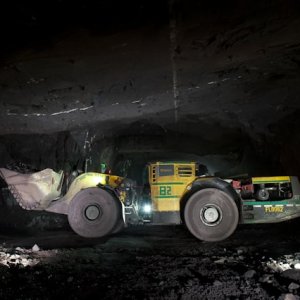Fresnillo’s Formula For Success: Strict Criteria & Investment

STORY INLINE POST
Q: What factors helped Fresnillo increase its silver production in 2017 despite an overall drop in global production?
A: Our long-term vision has been key to our ability to maintain high production rates no matter the price cycle. It is our main differentiator. We invest in exploration continuously throughout the cycles and are not dependent on M&As; 95 percent of our growth is organic. This gives us the possibility of bringing onstream projects that are strong and able to withstand the cyclicality of the mining industry without diluting the quality of our portfolio. Our strategy has allowed us to become one of the few companies that still has a strong growth pipeline despite the downturn. In 2017, we produced 53.3 million ounces of silver and 930,000 ounces of gold, making Fresnillo the world’s largest silver producer and the No. 1 gold producer in Mexico.
Q: How are rising base metal prices impacting Fresnillo’s operations?
A: All our mines are primary silver producers and we produce zinc and lead as a byproduct. As prices improve, base metals can become a more important source of revenue. Traditionally, our revenues in terms of lead and zinc only accounted for 7-8 percent of our total but last year these metals rose to 12 percent of total revenues. This helps increase the competitiveness of our mines and improve results.
Q: Why does the company believe that San Julian can become a new mining district in Mexico?
A: San Julian is our latest operation and it constituted the largest investment in the company’s history. We invested a total of US$515 million in the areas related to the feasibility study but we also considered the larger exploration potential of the district. By only exploring approximately 30 percent of the area we were able to develop a mine and this makes us believe that resources and reserves will continue to increase for many more years. In the first two years alone, we were able to increase the reserves we had initially identified in our feasibility studies. We have two different ore bodies in the area, one of which is disseminated and requires a flotation process while the other is a vein system that uses a dynamic leaching process. We had to invest such a large amount in San Julian because of the two different processes required and the initial lack of infrastructure in the area, but its positive return and the additional potential drove our decision to follow through with the project.
Q: What are the next steps Fresnillo is taking to start production at Juanicipio?
A: The public information we have released on Juanicipio is from our prefeasibility study in 2012. We are in the process of concluding a full feasibility study as we have now a larger volume of resources and we realized that a larger capacity would require a bigger investment than what was publicly released.
Juanicipio is the next-largest project in our pipeline and we are discussing with our JV partners the conclusion of the feasibility study. The approval process will be followed up by the project construction phase. Our goal is to start production in mid-2020 and we have identified 250 million ounces of indicated silver resources. This may be smaller than Saucito but those are high-quality ounces to add to our portfolio.
Q: What criteria does Fresnillo use for new projects before incorporating them into its portfolio?
A: We expect all our projects to have a minimum of 150 million ounces of silver when it comes to reserves or 3 million ounces of gold for us to consider it suitable for our portfolio. Most of our mines are also in the first quartile in terms of production costs so this is a key aspect to consider in our projects before we even think about developing them. We prioritize a stream of quality production ounces in our portfolio. The project also must be able to provide at least 15 percent IRR that can be achieved with higher grades or competitiveness in terms of the investment required to develop it.
Q: How would you describe the M&A market in the industry considering a decrease in investment?
A: We have reviewed the options available in the market but when we compare the possibilities for M&A to our own portfolio, those opportunities have always fallen short of our metrics. As the majority of our growth has been organic and up to now we have not needed to acquire additional projects to continue growing, we have the privilege of developing our own exploration projects. We have had to look more internally than externally.
Still, we have acquired prospects at early stages of exploration. We tend to look for projects that can help us consolidate a larger district and expand current mines. Any ounce that is located in close proximity to our infrastructure has a larger investment return. Our team of experienced geologists has spotted interesting exploration potential of prospects at very early stages that cost less to acquire.
Q: What will be Fresnillo’s objectives for the next decade as it is on the brink of meeting its 10th anniversary goals?
A: We are close to meeting our goal of producing 65 million ounces of silver in 2018 and we already reached our gold production target of 750,000 ounces in 2015. Our next step is to review all our prospects and projects to solidify and define our objectives for the coming years. We will continue to grow in the next four to six years and have new targets and projects beyond 2020.
Q: How important is it for Fresnillo to diversify its areas of operation?
A: In Mexico, we have 1.8 million hectares of exploration concessions and have many targets to explore but we believe that it is always healthy to diversify. The company has identified exploration opportunities in Peru and Chile and is scouting Argentina. We see Peru as a good country to enter as it has the culture and tradition of mining. The company also found that when comparing the ore bodies that have been discovered in Mexico and Peru, there are larger possibilities of a major discovery in Peru.
We used a different strategy by entering Peru four to five years ago since most mining companies at that time were reducing exploration in the country. We now have more than 350,000ha of concessions, which gives us the largest holding for exploration in Peru. But we have not been able to advance because permitting takes longer than in Mexico. Eventually, we will be able to develop more resources for exploration in Peru and we have hopes that Pilarica will become our first operation in the country. We are already halfway through the minimum resources needed, with 60 million ounces of silver in identified resources and further potential to grow. It is a silver and zinc ore body. In Chile, we have reviewed 120 different prospects and projects and the next step is to confirm an exploration option and put holes in the ground.
Q: What is the company’s guidance for gold production in 2018?
A: Our guidance for 2018 for gold production is similar to what we established in 2017 at 870,000-900,000 ounces. In the first five to six years, we were seeing gold production rise at a faster pace than silver but now silver is growing more. In 2017, we saw a slight reduction in gold production due to a longer leaching process at Herradura.























